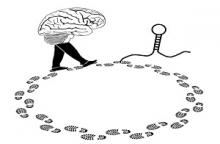This research effort, published in Biomolecules 2020, sought to uncover some of the molecular mechanisms behind Stereotypic Behavior (SB), a condition that involves patterned, repetitive, apparently purposeless movements, like pacing, rocking or swimming in circles, and is common in many psychiatric disorders such as Tourette’s syndrome, obsessive-compulsive disorder, schizophrenia, autism and more. However, the molecular mechanisms behind SB remain undiscovered.
SB likely involves some level of impaired emotional stress changes in brain, and the effect of stress on higher brain functions involves neuronal activation of several neurotransmitters systems - chemical messengers released by nerve cells to signal one another as well as other cells - including the well-known dopamine and glutamate-related systems. The changes in this signal system are governed by the neurotransmitter acetylcholine (ACh), the level of which is regulated by MiRNAs. These small non-coding molecules control protein expression from mRNA and include flexible structural features that enable them to target more than one mRNA and thus achieve gene-network-level regulation, even through a single type of MiRNA molecule. In the central nervous system, MiRNAs are involved in diverse functions including neuronal development, plasticity and cellular function, and many miRNAs have been found to change in behavioral mouse models. However, their role in SB remains unclear.
To investigate their role in relation to SB, we used a transgenic mouse model with elevated expression levels of acetylcholinesterase (AChE), the enzyme that breaks down ACh, similar to what occurs in the brain under stress. We found that the mice showed clear SB characteristics like impaired organization of behavior, performance errors in a serial maze test, reduced rearing in unfamiliar situations, and more. Next, we performed Small-RNA sequencing on the hippocampi of the mice and found 36 MiRNAs that showed statistically significant changes in response to SB behavior, and 8 of these MiRNAs regulate the expression of more than 5 cholinergic genes, consistent with our hypothesis. We have further validated these results by showing that mice displaying SB underwent variable changes primarily in the acetylcholine and glutamate systems in several regions of the brain.
Our findings demonstrate association of stress-induced SB to previously unknown disorder in the cholinergic/glutamatergic networks that is mediated by MiRNAs. These results can be used to find novel drug targets and new therapeutic strategies for correcting stereotypic behaviors.
Read the paper

